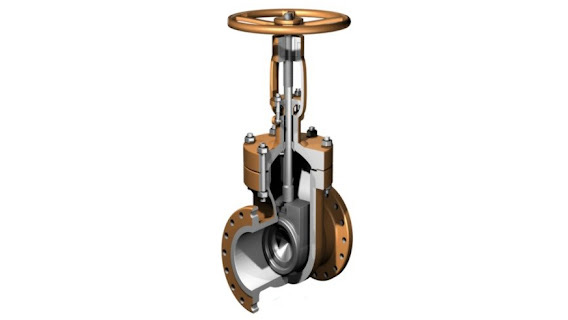- Contact Us
- Call Us
- Menu

There are many types of valves available for industrial fluid handling and process control applications. Specifying the proper valve type for an application can be made easier with some basic knowledge about the application strengths and weaknesses of the various valve types.
Gate valves open and close by changing the position of a rectangular or round wedge (the gate) in the fluid flow path. The sealing surfaces are arranged in a planar fashion and the gate, which is commonly either flat or wedge shaped, slides along the sealing surface from the open to closed position. Because of the cross-sectional shape of pipes, which is often mimicked in the valve body, the size of the opening created as the gate valve opens and closes does not change at the same rate as the percentage of total available movement of the gate. This non-linear aspect of valve operation can make a gate valve less suitable for an application where flow rate must be accurately controlled across the range from fully open to fully closed. Complicating throttling operations further is the possibility of the gate vibrating when partially open, due to the fluid flow around the gate assembly. Unless specifically designed for throttling, gate valves are generally best suited for applications requiring either full flow or no flow. Because of its operating nature and construction, a gate valve may prove to be the appropriate selection, based upon the type of media or fluid which is being controlled.
In addition to specifying the manner in which the valve will be connected within the piping system, consideration should be given to construction of the valve body. If it may be necessary to inspect, service, or clean the valve interior, look for a bonnet connection that will permit suitable access to the valve interior.
Once you have decided that a gate valve will be the most suitable type for your application, there are many other considerations in valve selection. Draw on the experience and knowledge of coworkers, maintenance technicians, and valve sales engineers to help specify a valve assembly that meets the needs of all project stakeholders.